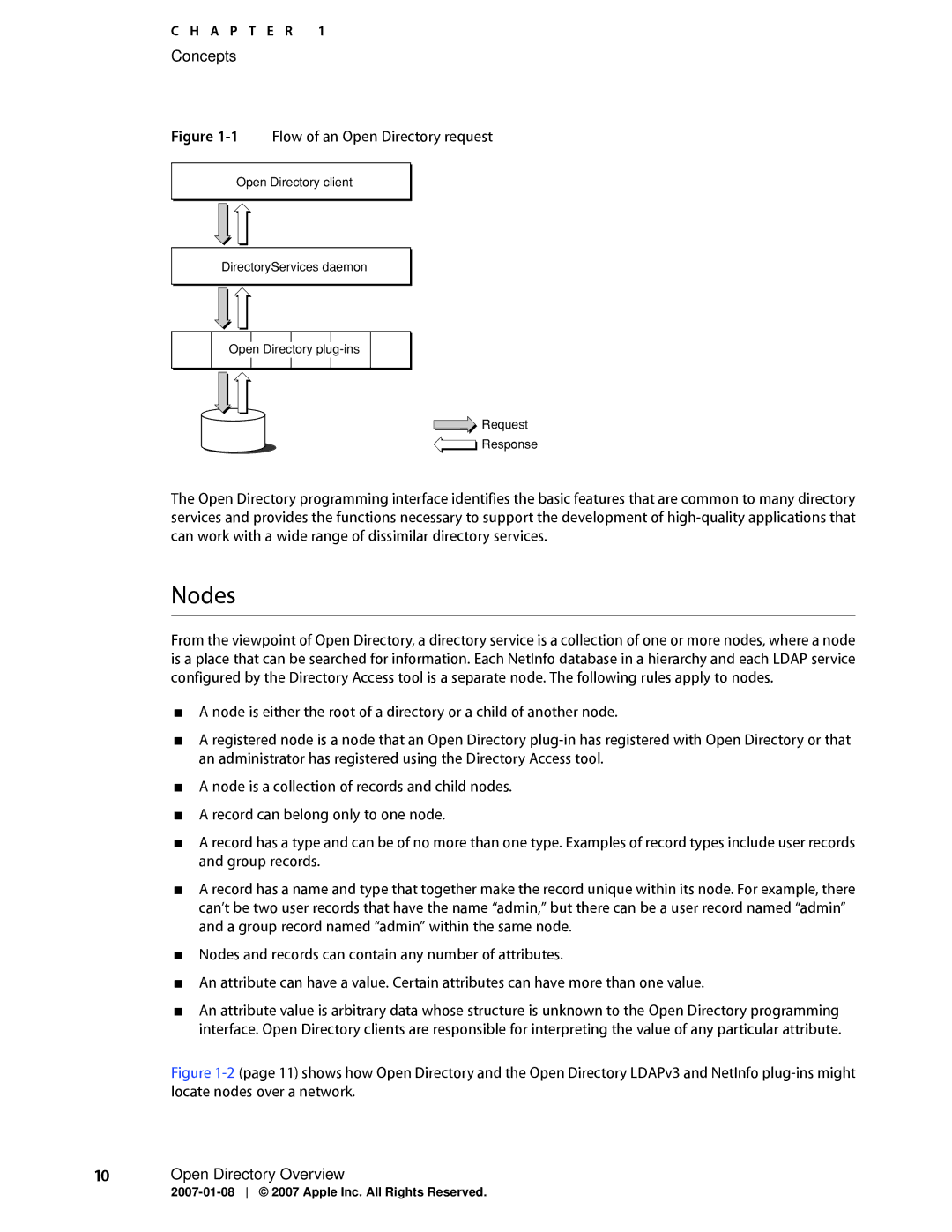
C H A P T E R 1
Concepts
Figure 1-1 Flow of an Open Directory request
Open Directory client
DirectoryServices daemon
Open Directory
![]() Request
Request
![]() Response
Response
The Open Directory programming interface identifies the basic features that are common to many directory services and provides the functions necessary to support the development of
Nodes
From the viewpoint of Open Directory, a directory service is a collection of one or more nodes, where a node is a place that can be searched for information. Each NetInfo database in a hierarchy and each LDAP service configured by the Directory Access tool is a separate node. The following rules apply to nodes.
■A node is either the root of a directory or a child of another node.
■A registered node is a node that an Open Directory
■A node is a collection of records and child nodes.
■A record can belong only to one node.
■A record has a type and can be of no more than one type. Examples of record types include user records and group records.
■A record has a name and type that together make the record unique within its node. For example, there can’t be two user records that have the name “admin,” but there can be a user record named “admin” and a group record named “admin” within the same node.
■Nodes and records can contain any number of attributes.
■An attribute can have a value. Certain attributes can have more than one value.
■An attribute value is arbitrary data whose structure is unknown to the Open Directory programming interface. Open Directory clients are responsible for interpreting the value of any particular attribute.
